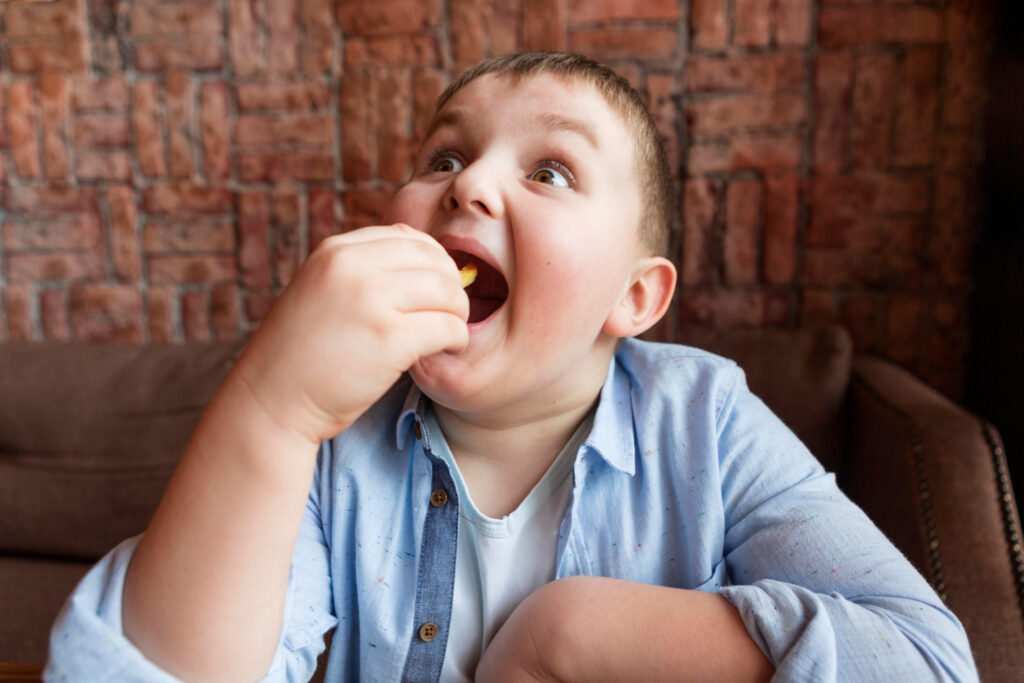
One may try and place oneself into a teenager’s shoes when at this turning point there stood the very weighty heavyweight of their bodies while it was to enjoy their life. Already at the adolescence level, it is not at all close to an aesthetic problem but serves as a ringing bell for threatening physical and psychic health. The consequences of obesity go far beyond visibility, from heart diseases to low self-esteem and social problems; this is a growing global problem unrelated to lifestyle but as an end result of a complex interplay of genetics, environment, and psychology. But how did obesity become a crisis? To understand this issue, we have to get to the root to understand how this challenge can be curbed.
What are the criteria for obesity in adolescents?
The most widely used diagnostic tool for obesity is the body mass index (BMI). It is calculated by a formula: weight in kilograms divided by height in meters squared. The cut-points for BMI categories in adolescents take into consideration age and gender since at this stage of life, the body is in a natural state of change. CDC and WHO have come up with standard charts, which have been divided into percentiles. These percentiles reflect the positioning of an individual’s BMI in relationship to a reference population of adolescents of similar age and gender. Classification of adolescent BMI:
- Underweight: Less than the 5th percentile
- Normal weight: From the 5th to less than the 85th percentile
- Overweight: From the 85th to less than the 95th percentile
- Obese: Equal to or greater than the 95th percentile
It is worth noting that one of the numerous criteria for the assessment of physical condition and growth pattern is BMI; nutrition, level of physical activity, and medical history should also be considered.
Leading causes of obesity among adolescents
It most times involves the playing of an interplay of factors that run contrary to the normal expected pattern of life and growth. Identifying its causes, of course, paves the way for effective ways of preventing it and subsequent interventions. The focus will therefore be placed upon each one of these causes within this section.
- Poor nutrition
One of the major components of overweight consideration among adolescents is the food consumption pattern that is not of a good quality. These include:
- High-calorie, processed foods
Fast foods and sweet and fatty foods are usually tastier and cheaper compared to healthy ones. Teenagers mostly use these instead of home-cooked meals for their accessibility
- Industrial drinks
The sparkling and energy drinks have a lot of sugar which puts many calories in the body without satiety
- Emotional eating
Overeating is one of the most put into action reactions to stress, sorrow, and even exhaustion among teens.
- Lack of physical activity
Lower level of exercise among teenagers is considered to be one of the major causes for obesity. This cause is associated with the following causes:
- Sedentary lifestyle
The excessive use of digital devices including smartphones, computers, and television have led to sedentary activities among adolescents.
- Decreased time for playing
Nowadays, adolescents spend less time in sports or physical activity because of schoolwork, changing facilities, and environments.
- School contribution
Reduction of sports time within the syllabus and non-availability of appropriate sports facilities at schools have been an added feature to the cause.
- Mental aspects
The feelings and states of mind of the teenagers are another factor that plays a significant role in gaining weight. The following states of mind are usually caused by the emergence of the following factors:
- Tension and anxiety
Pressures pertinent to school, companionship, or expectations from the family would sometime force teens to overindulge or not exercise enough
- Depression
Changes in appetite and decrease in physical activity is related to mood disorders such as depression.
- Sleep disorders
Poor and deficient sleep simply plays with hunger hormone regulation-being ghrelin and leptin. It can easily progress into cravings for high-calorie foods.
- Genetic and family factors
Genetics and family traditions in adolescent obesity influence the process of weight formation and gaining in an irrefutable and decisive way. The risk of overweight is addressed in large proportion towards children of the obese parents. Here everything is a matter of family eating behavior. It is customary, for example, in such families, to eat a lot of fast foods and fried foods and then it leads to adolescents developing the very same eating behavior contributing to overweight.
- Environmental and social influences
The weight and lifestyle of the teenager get highly influenced by the environment and the society that the teenagers get to grow up in. These influences may come from any other influence. In fact, adolescents, as an important part of society, always get influenced by the behavioral and food habits of the family and the people surrounding them, and this may result in the development of healthy or not-so-healthy habits in them. Some of these factors are:
- Junk foods’ advertisements
Television and social media advertisements have made unhealthy products look so tempting. These tempt adolescents to consume more such foods.
- Easy availability of junk food
Chain stores and restaurants near schools or residential areas make it hard for adolescents to opt for healthier options.

Behavioural Change Attempt: Strategies for the Prevention and Control of Obesity in Adolescence
Obesity in adolescents is an issue that can be resolved by some effective measures. It is a change of lifestyle, eating pattern, physical activity, and psychological support all together. The prevention and management methods shall be considered judiciously here.
- Promote healthy eating
The improvement of adolescents’ eating behavior should be the first step toward prevention and management of obesity:
- Healthy eating education
Teens and parents should learn the importance of consuming foods from five food groups: proteins, carbohydrates, healthy fats, fruits, and vegetables. Limit foods containing added sugars, processed foods, and sugar-sweetened drinks.
- Prepare home-made meals
Home-made meals are always healthier and with fewer calories compared to fast food. Parents can engage teens in meal preparation to help them learn how to practice healthy eating.
- Eat healthy snacks
Substituting chips and candies with nuts, fresh fruits, or low-fat yogurt will help minimize extra calories.
- Aerobic exercise
The most significant factor to reduce weight and for a healthy life is being active:
- Daily exercise
According to research, teenagers should be able to engage in at least 60 minutes of moderate to vigorous physical activity every day. Sports like running, swimming, soccer, and even walking can be used.
- Family activities
Family activities, like hiking and biking, also can make teens feel more motivated to move.
- Reduce the time spent on the screen
Reducing the time spent on watching TV, using a smartphone, and computer to a few hours daily allows having more time for active movement.
- Ensuring mental health
Among the main causes of overeating and lack of activity in adolescents are psychological aspects:
- Stress management
Relaxation techniques can help reduce levels of stress, anxiety and overeating-emotional eating can be reduced by meditation or artistic activities.
- Psycho-social support
Counselling or psycho-therapeutic groups for adolescents suffering from tension, anxiety or depression will avoid undesirable behaviour.
- Development of self-confidence
Parents and teachers should help adolescents accept their positive capabilities and attributes and be supported for change with no criticism
- Parental and social role
The parents can influence adolescents’ eating and physical activities by providing them with correct behavioral and educational models, and they have the ability to influence adolescents’ behavior and habits directly.
- Healthy role modeling in the family
Parents can be a healthy role model to adolescents through the kind of food they eat and their lifestyle, whether active or not.
- Education in schools
Schools can surely contribute to the student health by educating them through healthy programs and enough hours of exercise.
- Social Environment Improvement
Building parks, sports facilities, and providing available healthy foods may provide the chances for good behaviors to be developed in society.
- Plan and Persist
- Realistic Goals
Small and gradual changes, such as cutting one soda every day or adding 15 minutes of walking, are more likely to last longer.
- Regular Monitoring
Monitoring of weight, eating, and physical activity of your teenager can help you and your family to see what’s working and feel motivated.
- Motivation and Rewards
Encouraging your teenager to meet small objectives and rewarding them with something like a weekend outing or purchasing sports equipment may help your teenager stay motivated.
Final Thoughts
If you or a teenager you know has a problem with obesity, don’t worry; this is not only a solvable problem but also, with little perseverance and gradual changes, you can get remarkable results. Remember that every small step on the path of change is worthy, and most importantly, you are not alone on this path. Healthy nutrition, regular physical activity, and psychological support are the keys to opening the doors to a healthier and happier life. All it takes is patience, commitment, and believing in your own powers. Jam Specialized Collection, by hosting the best nutritionists, is the safe companion of your loved ones on this path.
Sources
Childhood and Adolescent Obesity: A Review
What causes obesity in children and adolescents?
Obesity in children and adolescents: epidemiology, causes, assessment, and management








No comment yet, add your voice below!